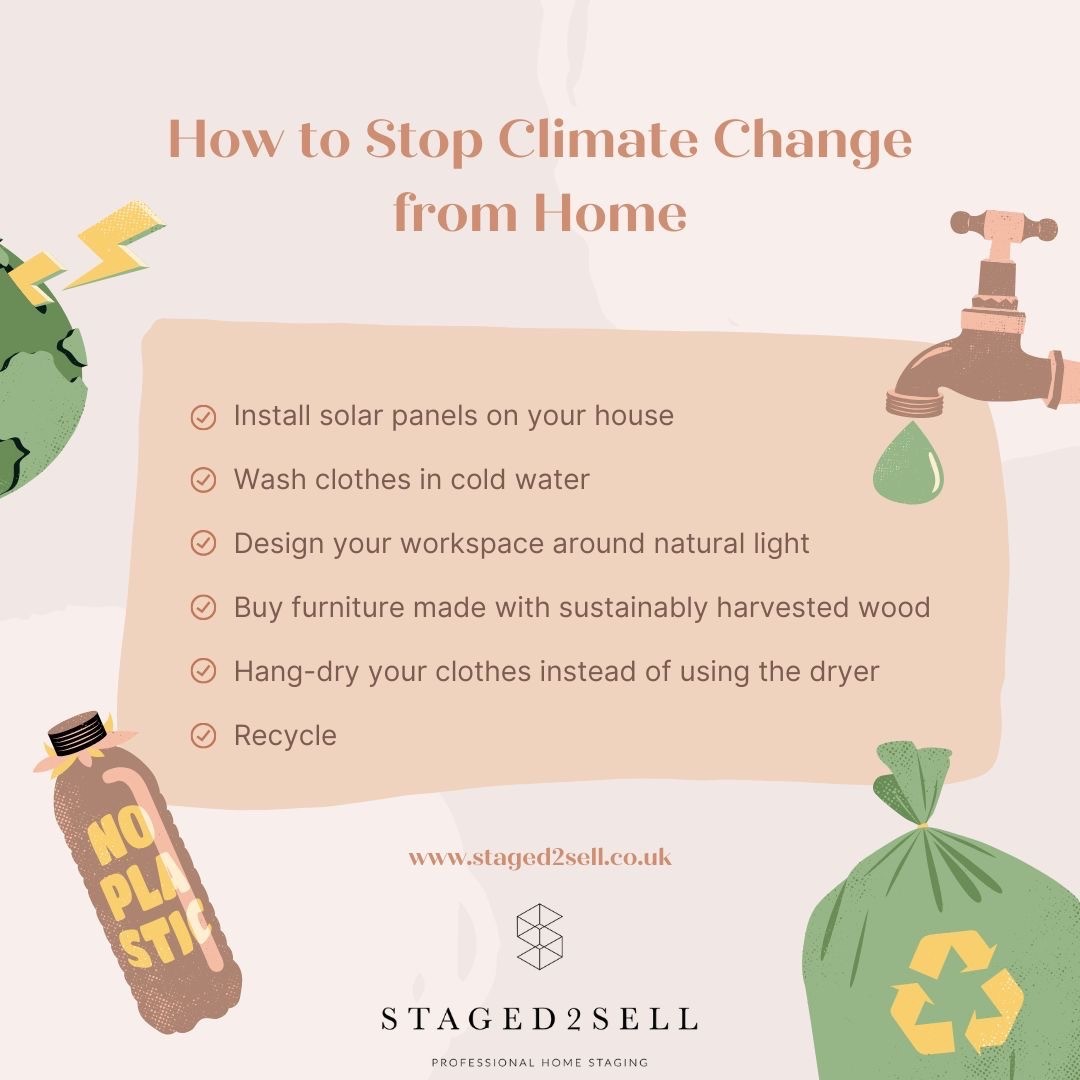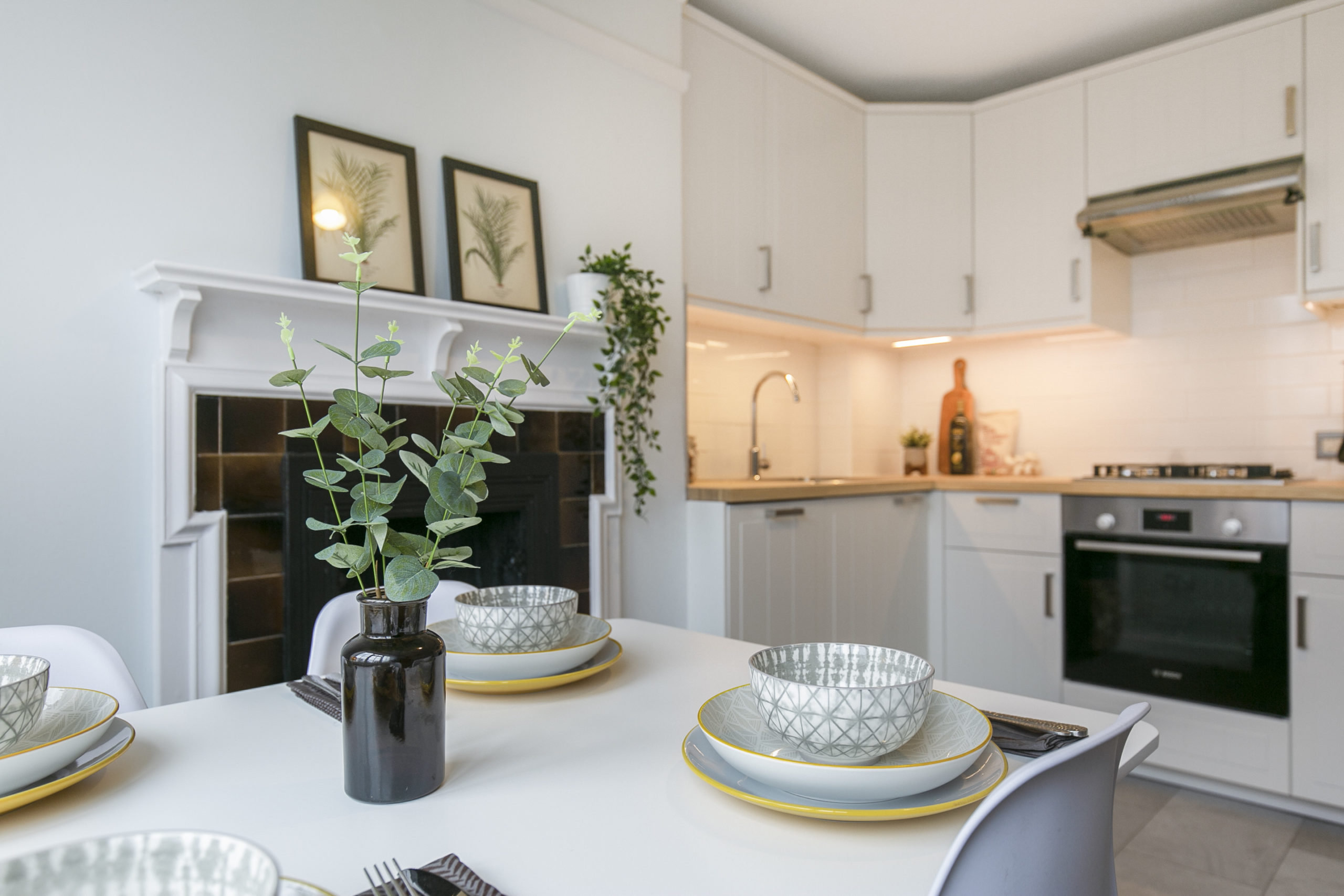
One of the big trends for homes in 2022 is going to be about ensuring your home is sustainable.
Check out some top tips on how you can do more to protect the environment from your own home:
THE KITCHEN:
- Buy energy-efficient domestic appliances — our kitchen appliances are undeniable energy guzzlers that become even worse culprits if not used in the right way.
- Clothes should be hung outside to dry.
- Defrost fridges at least every six months, if they don’t have an automatic function, and avoid putting hot food straight in.
- Ditch sponges and scouring pads made from non-renewable sources containing harmful synthetic dyes and disinfectants to those made from sustainably grown crops, such as loofah and coconut.
THE LIVING / SITTING ROOM:
- Regulated tap inserts are offered free by many water companies. Easy to fit on specified taps so that even DIY-phobes can cope, they limit splashing and restrict water flow to five litres (nine pints) per minute, thus saving the average household money each year. Shower Sense flow regulators do the same, ensuring that the shower releases its contents at a more eco-friendly rate of eight litres (14 pints) per minute. Check out your local water companies website for more information.
- Conserve water and send less volume to sewerage treatments by following the adage ‘If it’s yellow, let it mellow; if it’s brown, flush it down’. There are obviously right and wrong times to put this into practice — for example, not when visitors are due, but possibly at night when only the family is home.

THE BOILER ROOM:
- Solar panels come with the second lowest price tag and payback, but the system has to be scaled to match consumption. Unfortunately for householders, Government feed-in tariffs for additional power generated ended in April. Increasingly, solar panels are linked up to battery storage, so extra energy generated when the sun is shining can be banked and used when needed.
- A switch to a Green energy supplier won’t mean using non-National Grid electricity and gas, but the provider will buy energy from renewable sources, matching the amount you purchased
THE GARDEN:
- A greenhouse — even a small one — or a polytunnel will extend the growing season and will be ideal for aubergines, melons, peppers and tomatoes
- Composting garden and non-food uncooked kitchen waste is valuable, but, in most households, the available waste produces little organic matter in the end. Where fallen leaves are abundant in the autumn, stacking leaf mould is worthwhile. Composted municipal waste is increasingly widely offered and is a good source of sustainable soil food.
How to Stage a Property on a Budget (Without Compromising Style)
How to Stage a Property on a Budget Selling a home doesn’t have to drain your wallet. Learning how to stage a property on a budget means making smart choices that maximise impact while keeping costs low. Even simple tweaks can make a huge difference in how buyers...
How to Optimise the Price of Your House Through Staging
How to Optimise the Price of Your House Through Staging When it comes to selling your home, presentation is everything. Staging isn’t about redecorating for your own taste, it’s about creating a space that appeals to the widest pool of buyers and makes them imagine...
What Rooms Should You Stage to Sell Your Home Faster in 2025?
What Rooms Should You Stage to Sell Your Home Faster in 2025? You don’t always need to stage every inch of your property. But if you’re asking what rooms should you stage in 2025, here are the ones that matter most:1. Living Room The emotional hook. Buyers imagine...
The Neuroscience of ‘Feeling at Home’: How to Trigger Emotional Buying Responses
When it comes to selling property, most people focus on features: square footage, number of bedrooms, postcode. But here’s a powerful truth that great stagers and estate agents understand intuitively — buyers make decisions emotionally first, and rationally second....
Use Trending Styles (Within Reason): How to Stage with a Timeless Yet Trend-Forward Twist
Home staging is as much about setting a mood as it is about selling square footage. And in a visual-first world, staying in touch with design trends gives your properties that irresistible “I want to live here” quality. But here’s the catch: go too far with trends,...
Film Your Staging: Why Short Videos Are Now Essential for Selling Homes
Gone are the days when a handful of static listing photos and a brochure could seal the deal. In today’s market, video content is king — and if you're not filming your staging, you're missing one of the most powerful tools in modern property marketing. Whether you’re...
Embrace Micro-Moments: The Secret to Staging Homes That Stick in Buyers’ Minds
In an era where attention spans are shrinking and first impressions happen in under five seconds, it’s no longer enough to stage a room — you need to stage a moment. Enter the concept of micro-moments: small, emotionally resonant scenes within a space that captivate,...
Property Staging vs Interior Design: What’s the Difference in 2025?
Property Staging vs Interior Design: What’s the Difference in 2025? Still confused about property staging vs interior design? You’re not alone. In 2025, the lines are often blurred - but knowing the difference can help you sell faster. What Is Property Staging?...
Is Property Staging Worth It?
Is Property Staging Worth It? If you’re asking yourself, is property staging worth it in 2025, the short answer is: yes, more than ever. With the property market still competitive and buyers expecting high standards, staging is no longer a nice-to-have, it’s...
The TikTok Effect: How Short-Form Video is Shaping Buyer Expectations
The TikTok Effect: How Short-Form Video is Shaping Buyer Expectations In today’s hyper-visual world, buying a home no longer starts with a visit — it starts with a swipe. Social media, especially short-form video platforms like TikTok, Instagram Reels, and YouTube...
Recent Comments